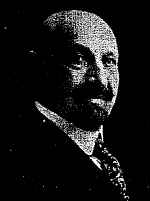
|
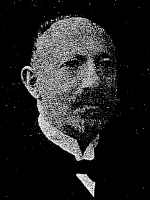
|
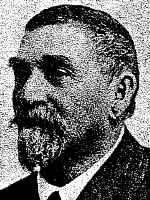
|
Rb. Dr. K. Thieberger
Ignaz Fantl
Otto Ullmann
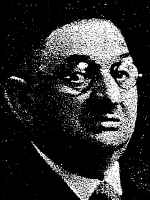
|
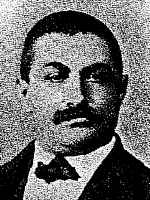
|
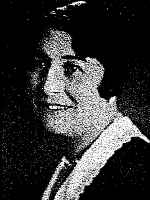
|
Moritz Ullmann
Markus Ullmann
Bertha Stein
|
|
[Pages 49-50]
(Český Krumlov, Czech Republic – 48°48' 14°18')
Compilation by Rabbi Prof. Dr. L. Hirsch, Böhmisches Krumau [1]
Translated from the original German by Jan O. Hellmann/DK
Edited in English by Rob Pearman/UK
According to the few existing sources of information concerning the settlement of Jews in Southern Bohemia, is it clear that until1848 the towns were strongly opposed to Jewish settlements. If a Jew had business in Krumlov, then he had to stay overnight outside the town, in most cases at the inn known as “Hanelwirtshaus” (Hana´s Inn) on Kalschinger Street. Also he had to announce his presence to the police, manage his business during the day, and then return to his home town.
From the Krumlov police records of 26 August 1845, we know that the familiant Abraham Hájek from Stahleč – in the Tábor region – reported that on 19 August 1845 his wife Judith, Julie née Kaff, had given him a son, who was named Salomon at his circumcision on 26 August 1845. According to the files of 1845, this family Hájek, Kaff, is probably the oldest Jewish family in Krumlov [2]. They lived in the suburb of Spitzenberg, where they occupied a prayer room.
According to these files, each family record [3] had to be checked by the catholic priest and then the registration card would be given to the keeper of Jewish records. According to the registration card dated 18 November 1850, Bernhard, son of the married couple Samuel and Karoline Gaff (Kaff), was born on 13 February 1825. The place of his birth is not mentioned, but it is stated that the registration card is “in accordance with the priest's confirmation”. So he was probably born in another place.
From a death certificate dated 6 December 1855, we learn that the deceased person is Simon Lederer, son of Lukas and Fanny Lederer (née Weil) from 48 Gottesackergasse (God's Field Lane) in Krumlov. The Lederer family came from Radenín – in the Tábor region – and received a permit to settle in Krumlov after 1844.
There is also reference in 1853 to the family of Isaak Möller from Přehařov – in the Tábor region; on 28 January 1858, there is mention of the families of Bayer and Katharina Lewit, also from Spitzenberg Suburb Street no. 70, and also of the families of Jakob Bloch, Isaak Eisner, Emanuel Fisch, Ignaz Spiro and Tobias Fessler.
The families of Lazar Lewit, Abraham Hájek and others are also specifically mentioned as being within the jurisdiction of the municipality [4]. The fact that the families are living in different streets is proof that there was no ghetto in Krumlov. The Jews were part of the ancient community of Rosenberg (Růžový), where they were also buried. The records often show the towns of Radenín, Miskowitz (Miskovice) as the place of birth. This was a sign of the Jews' devotion to their origin.
In Krumlov, the Jews founded a prayer association which later became the Jewish Community of Krumlov. The founder and first chairman was the manufacturer, Ignaz Spiro, who was born on 21 July 1817 in Kalenitz in Bohemia (Kalenice v čechách). He undertook Talmudic studies at the Yeshiva in Kalladay (Koloděje nad Lužnicí) and wanted to become a rabbi. Despite his profound piety, he felt that he was not born to such a high vocation and started to manufacture paper instead.
He bought the ‘Pötsch’ paper mill in Krumlov and thanks to his willingness to work, and with the help of his sons, he built it into a world–renowned company. The factory burnt down once and had to be rebuilt with great effort. He made sure that his sons received a good education: Ludwig was the commercial head of the business, while Dr. Emanuel was the technical head. Thanks to their conscientious and specialist leadership, the company reached undreamt of heights and, together with the power plant built by the company in Hohenfurt (Vyšší Brod), ‘Spiro’ is one of the town's great sights as well as providing bread and livelihood for thousands of people.
When Ignaz Spiro closed his eyes for ever on 24 October 1894, he knew that he had done his best for the community. During his period of office, a large and fine cemetery was established, together with a prayer house and a trust for financing the building of the synagogue. The prayer room in the Diebel orphanage has already been in use now for 50 years. It was the increase in the capacity of this orphanage which made it necessary to build a synagogue.
The temple was constructed, following the purchase of a garden plot, according to the plans of architect Kafka from Prague; it was built in 1908/1909 by builder Sosna and master builder Hauber, and solemnly inaugurated in 1909. Among others, the temple building committee comprised: Ludwig Spiro, Dr. Emanuel Spiro, Dr. Schwarz, Julius Spiro, Dr. Kohn, Dr. Loria, Ignaz Lederer, S. Kobias and Julius Epstein. Each of them supported the project with their actions and their advice. The temple is truly an adornment for the town. Its tower is visible from all around, and it has space for 140–180 persons. A good harmonium, an excellent choir leader and a well–trained choir ensure devotion and inspiration.
The first temple committee consisted of Jacob Bloch, Ignaz Lederer, Michael Metzl, regional counselor Dr. Urbach, and Max Knöpfelmacher. The first two gentlemen were in office for decades until their death.
Footnotes
Links
|
|
|
|||||
Rb. Dr. K. Thieberger |
Ignaz Fantl |
Otto Ullmann |
|||||
|
|
|
|||||
Moritz Ullmann |
Markus Ullmann |
Bertha Stein |
|||||
|
|
|
||||||||||||
|
|
|
|
|||||||||||
Dr. Julius Loria |
Dr. Otto Schwarz |
Rb. Dr. L. Hirsch |
Ignaz Lederer |
|||||||||||
|
|
JewishGen, Inc. makes no representations regarding the accuracy of
the translation. The reader may wish to refer to the original material
for verification.
JewishGen is not responsible for inaccuracies or omissions in the original work and cannot rewrite or edit the text to correct inaccuracies and/or omissions.
Our mission is to produce a translation of the original work and we cannot verify the accuracy of statements or alter facts cited.
 Jews and Jewish Communities of Bohemia in the past & present
Jews and Jewish Communities of Bohemia in the past & present
 Yizkor Book Project
Yizkor Book Project
 JewishGen Home Page
JewishGen Home Page
Copyright © 1999-2024 by JewishGen, Inc.
Updated 14 May 2017 by JH